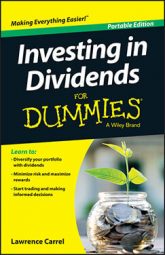In taxing dividends, the government engages in a form of double dipping, more commonly referred to as double taxation. With double taxation, the government collects taxes on the same money twice: It taxes the company's profits (typically at a rate of 35 percent) and then taxes the dividends investors receive, which come out of the company's after-tax profits.
Prior to the Jobs and Growth Tax Relief Reconciliation Act (JGTRRA), this arrangement meant the government could receive 35 percent of a company's profits and then up to another 38.6 percent of each investor's cut!
Double taxation has several effects on how companies do business and where investors choose to put their money:
To dodge the double-taxation bullet, many corporations choose to invest all of their profits in research, development, and other ventures rather than distribute a portion of the profits to investors.
Investors also are motivated to dodge the double-taxation bullet by investing in companies that don't pay dividends. Instead of relying on dividends for their returns, investors tend to shift their focus to growth and rely on share price appreciation for their returns when they sell their stock.
The threat of double taxation may drive management to invest in projects with less potential merely to avoid the double tax, which may be bad for the company and investors.

